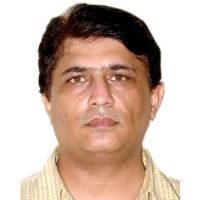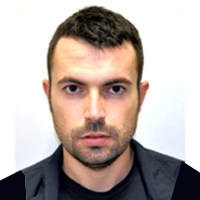Navigating Diagnostic Dilemmas in Subacute Subdural Hemorrhage: A Case Report
Published on: 26th March, 2024
In this case report a 64-year-old male patient with recent past medical history of head injury complicated by zygomatic arc fracture and mild subarachnoid hemorrhage is studied. He had been presented to the Emergency Department because of progressive neurological symptoms and neurological deficits in the physical examination that could have been indicating subcacute subdural hemorrhage. However, the patient was reluctant to undergo diagnostic imaging due to concerns about radiation exposure. After several explanations, a CT scan was done, which revealed a bilateral subacute subdural hematoma. Neurosurgical management was initiated and intravenous corticosteroid therapy was administered to reduce local edema. The challenge of this case is based on the subtlety of symptoms that might cause patients to delay seeking medical attention. Additionally, patient reluctance to undergo diagnostic tests can complicate management, emphasizing the importance of patient education and therapeutic alliance. Multidisciplinary management involving Neurology and Neurosurgery is crucial for optimal patient care in such cases. This report underscores the significance of effective communication and collaborative decision-making between healthcare providers and patients to ensure timely and appropriate management of complex medical conditions.
A Brief Dig into the Potent Medicinal Plant Phyllanthus Amarus Schum. and Thonn.
Published on: 27th March, 2024
Phyllanthus amarus Schum. and Thonn., a plant of substantial medicinal significance, is known for its usage in the ‘Ayurvedic’ system of medicine for over 2000 years. This herb grows throughout the world including India. P. amarus along with other species of its genus has been a vital part of several herbal formulations available in the Indian market under the trade name Bhuiamlaki. Several pharmacognostic evaluations over the years established the genus Phyllanthus of great commercial value. Ethnopharmacological studies conducted with P. amarus to date have shown its diverse therapeutic usage globally. This owes to the vast array of secondary metabolites present in the herb, substantially in the leaf tissue. Different analytical and phytochemistry studies performed across the globe revealed that P. amarus is a hub of various classes of secondary metabolites viz. lignans like phyllanthin, hypophyllanthin, flavonoids, alkaloids, triterpenes, sterols, volatile oil, ellagitannins including simple and complex tannins, etc. Different analytical techniques have been employed over the past years for isolating and studying these varied secondary metabolites. Further, bioactivities and pharmacological properties of P. amarus that were mainly due to the presence of these wide arrays of secondary metabolites have also been explored extensively across the globe by several research groups. This plant has also been explored at molecular and transcriptome level, although relatively lesser but its extensive molecular and transcriptome analysis have only been performed from our lab. Thus, P. amarus has considerable potential to be explored in the future as a significant therapeutic source not only in the traditional medicinal system but also in the modern pharmaceutical industry.
The Ketogenic Diet: The Ke(y) - to Success? A Review of Weight Loss, Lipids, and Cardiovascular Risk
Published on: 6th March, 2024
Background: Obesity remains a global epidemic with over 2.8 million people dying due to complications of being overweight or obese every year. The low-carbohydrate and high-fat ketogenic diet has a rising popularity for its rapid weight loss potential. However, most studies have a maximal 2-year follow-up, and therefore long-term adverse events remain unclear including the risk of Atherosclerotic Cardiovascular Disease (ASCVD).Results: Based on current evidence on PubMed and Google Scholar, there is no strong indication ketogenic diet is advantageous for weight loss, lipid profile, and mortality. When comparing a hypocaloric ketogenic diet with a low-fat diet, there may be faster weight loss until 6 months, however, this then appears equivalent. Ketogenic diets have shown inconsistent Low-Density Lipoprotein (LDL) changes; perhaps from different saturated fat intake, dietary adherence, and genetics. Case reports have shown a 2-4-fold elevation in LDL in Familial hypercholesterolaemic patients which has mostly reversed upon dietary discontinuation. There is also concern about possible increased ASCVD and mortality: low (< 40%) carbohydrate intake has been associated with increased mortality, high LDL from saturated fats, high animal product consumption can increase trimethylamine N-oxide, and cardioprotective foods are likely minimally ingested.Conclusion: Ketogenic diets have been associated with short-term positive effects including larger weight reductions. However, by 2 years there appears no significant differences for most cardiometabolic risk markers. Therefore, this raises the question, excluding those who have a critical need to lose weight fast, is this diet worth the potentially higher risks of ASCVD and mortality while further long-term studies are awaited?
CVS: An Effective Strategy to Prevent Bile Duct Injury
Published on: 2nd April, 2024
Background: Bile duct injuries have been substantially increased after the introduction of laparoscopic cholecystectomy (LC). These are accompanied by major morbidity and mortality. Studies have shown varying degrees of success in the reduction of bile duct injury (BDI) using the Critical View of Safety (CVS) technique. The aim of this study was to see the efficacy of the CVS technique as the sole method of dissection in laparoscopic cholecystectomy. Methods: 1647 cases of LC were done between January 2012 and January 2022 for a period of 10 years in two hospitals. All were operated by the CVS dissection technique and none by the infundibular technique. Cases included acute cholecystitis, chronic cholecystitis, gangrenous cholecystitis, empyema, and Gallbladder (GB) polyp. Results: The average operating time was 42 minutes and the range was 13 to 80 minutes. In 92% of cases, all 3 criteria of CVS were achieved. In the remaining 8% cases were either converted to open or operated by a division of GB or subtotal cholecystectomy was done. There was only one case of cystic duct stump leak requiring drainage and common bile duct stenting.Conclusion: The excellent outcome of our study suggests that the CVS method will be the gold standard technique in the dissection of the gallbladder in LC. Further dissemination of the technique is necessary to improve safety in LC.
Drinking-water Quality Assessment in Selective Schools from the Mount Lebanon
Published on: 2nd April, 2024
The present study aims to assess and compare the quality of drinking water according to WHO Standards and then illustrate the resulting diseases. Eight samples have been taken from selective different schools in the Mount Lebanon Region. The laboratory tests of the collected samples were performed to determine various physical (e.g., temperature, pH, electrical conductivity, etc.), chemical (Ca+2, Cl-, Fe, Mg2+, NO3, Na+, SO2-4), and microbial such as E. coli, coliform, and non-coliform. Several techniques were used for the analysis including Atomic Absorption Spectrometry, Flame Photometer, and Total Organic Carbon (TOC). The resulting water quality was compared with the standard limits. Each school has different defects according to specific contamination that existed. To save local residents and according to the results of this study, regular monitoring for water quality was proposed; besides more water filtration plants should be installed to provide safe drinking for children’s health.
Contrast-enhanced Susceptibility Weighted Imaging (CE-SWI) for the Characterization of Musculoskeletal Oncologic Pathology: A Pictorial Essay on the Initial Five-year Experience at a Cancer Institution
Published on: 2nd April, 2024
Susceptibility-weighted imaging (SWI) is based on a 3D high-spatial-resolution, velocity-corrected gradient-echo MRI sequence that uses magnitude and filtered-phase information to create images. It SWI uses tissue magnetic susceptibility differences to generate signal contrast that may arise from paramagnetic (hemosiderin), diamagnetic (minerals and calcifications) and ferromagnetic (metal) molecules. Distinguishing between calcification and blood products is possible through the filtered phase images, helping to visualize osteoblastic and osteolytic bone metastases or demonstrating calcifications and osteoid production in liposarcoma and osteosarcoma. When acquired in combination with the injection of an exogenous contrast agent, contrast-enhanced SWI (CE-SWI) can simultaneously detect the T2* susceptibility effect, T2 signal difference, contrast-induced T1 shortening, and out-of-phase fat and water chemical shift effect. Bone and soft tissue lesion SWI features have been described, including giant cell tumors in bone and synovial sarcomas in soft tissues. We expand on the appearance of benign soft-tissue lesions such as hemangioma, neurofibroma, pigmented villonodular synovitis, abscess, and hematoma. Most myxoid sarcomas demonstrate absent or just low-grade intra-tumoral hemorrhage at the baseline. CE-SWI shows superior differentiation between mature fibrotic T2* dark components and active enhancing T1 shortening components in desmoid fibromatosis. SWI has gained popularity in oncologic MSK imaging because of its sensitivity for displaying hemorrhage in soft tissue lesions, thereby helping to differentiate benign versus malignant soft tissue tumors. The ability to show the viable, enhancing portions of a soft tissue sarcoma separately from hemorrhagic/necrotic components also suggests its utility as a biomarker of tumor treatment response. It is essential to understand and appreciate the differences between spontaneous hemorrhage patterns in high-grade sarcomas and those occurring in the therapy-induced necrosis process in responding tumors. Ring-like hemosiderin SWI pattern is observed in successfully treated sarcomas. CE-SWI also demonstrates early promising results in separating the T2* blooming of healthy iron-loaded bone marrow from the T1-shortened enhancement in bone marrow that is displaced by the tumor.SWI and CE-SWI in MSK oncology learning objectives: SWI and CE-SWI can be used to identify calcifications on MRI.Certain SWI and CE-SWI patterns can correlate with tumor histologic type.CE-SWI can discriminate mature from immature components of desmoid tumors.CE-SWI patterns can help to assess treatment response in soft tissue sarcomas.Understanding CE-SWI patterns in post-surgical changes can also be useful in discriminating between residual and recurrent tumors with overlapping imaging features.
Knowledge, Attitude, and Practice of Healthcare Workers in Ekiti State, Nigeria on Prevention of Cervical Cancer
Published on: 3rd April, 2024
Purpose: The role of healthcare workers in cervical cancer prevention is pivotal because healthcare workers’ recommendations have been reported to be a key motivational factor for cervical cancer screening among women in Nigeria. Assessing their knowledge, attitudes, and practices on cervical cancer prevention is necessary.Patients and methods: This is a cross-sectional survey involving healthcare workers in Ekiti State, Nigeria. A questionnaire designed for the study was used to obtain data about the knowledge, attitudes, and practices of the healthcare workers. Logistic regression was used to assess the determinants of practice and a p - value of less than 0.05 was taken as statistically significant.Results: Out of 188 participants that completed the study, 165(90.7%) had good knowledge about the prevention of cervical cancer while 24(13.2%) had good practice concerning the prevention of cervical cancer. positive attitude (Odds ratio 1.24, 95% CI 1.14 - 1.35, p < 0.001) increased the odds of good practice.Conclusion: There was no association between the knowledge of cervical cancer prevention and the practice of the healthcare workers. Further research is required to explore the incongruence between knowledge and practice of cervical cancer prevention and its practice.
Oral Cancer Management is not just Treatment! But also, how early Pre-cancerous Lesions are Diagnosed & Treated!!
Published on: 12th April, 2024
Oral Cancer (OC) or squamous cell carcinoma of the oral cavity accounts for approximately 3% of all cancers worldwide, with increased incidence in developing countries. The use of tobacco is directly associated with approximately 80% of oral cancers, especially in older men over 40 years of age. As nearly one-third of the Indian population over 15 years consume smokeless tobacco in one or the other forms, a recent increase has been observed in OC incidence among women and young adults. Lately, the sexual behaviors of young & homosexuals have resulted in the emergence of oropharyngeal cancers due to infection with HPV 16. About 60% of oral cancer cases in India have a five-year survival rate, and this can be improved to 70% to 90% by mere early detection in stages I and II and with various treatment modalities. Despite the well-known benefits of oral cancer screening for the whole population in developing countries remains controversial. It is imperative to address the cultural barriers and societal norms, which limit the acceptability and participation in screening programs in India and many developing countries. This unique challenge of increasing OC morbidity in India and developing countries requires horizontal integration of the health systems with new services focused on cancer control, which gives the best chance for long-term survival, improved outcomes, and affordable care!This article is based on the author’s experience of overseeing 1 case of early detection and 2 cases of delayed diagnosis, outcomes and relevant literature review, and current guidelines for the management of OC.
Statistical Mathematical Analysis of COVID-19 at World Level
Published on: 5th April, 2024
Worldwide, statistical data of people infected by COVID-19 has been taken until March 29, 2023, which, when correlated, showed a predictive logistic model. The purpose was to determine the predictive model, which was acceptable, in such a way that the proportionality constant and the correlation and determination coefficients are of great importance to estimating epidemiological and pandemic data; coinciding with what was reported by other authors. Bearing in mind that a mathematical model is a mathematical description through a function or equation of a phenomenon in the real world; whose purpose is to understand infections and make predictions for the future. The stages were: to model the number of people infected as a function of time, formulate, and choose the logistic model, determine the model and obtain mathematical conclusions, and make predictions (estimates) about the number of people infected by COVID-19 worldwide. The logistic model was derived to predict the speed of people infected by COVID-19 and the critical time (tc = 733 days) for which the speed was maximum (1694,7209 infected/day). The Pearson correlation coefficient for the time elapsed (t) and the number of people infected (N) worldwide, based on 32 cases, was r = -0.88; the relationship between time and those infected is real, there is a “very strong correlation” between the time elapsed (t) and the number of people infected (N) and 77.03% of the variance in N is explained by t.
New Fungi Associated with Blackberry Root Rot (Rubus spp.), in Michoacán, Mexico
Published on: 15th April, 2024
Los Reyes, Michoacán, Mexico, is one of the main blackberry-producing places in the world, however, the disease located at the root level has caused important economic losses. Currently has been reported that the fungus Fusarium spp., is the main causal agent but actions to control it have failed. The objective of this work was to identify the possible presence of unreported pathogenic fungi in the root system of the blackberry and identify them molecularly. It was sampled in a commercial open-air orchard from Los Reyes, pieces of roots were taken from symptomatic plants with wilting and decay. The fungi were isolated in the laboratory, identified with taxonomic keys, extraction was performed, and the sequences obtained were compared with those reported in the NCBI gene bank. Among the results obtained were Kalmusia italica, Epicoccum nigrum, Microsphaeropsis arundinis, Achizophyllum commune, and, as expected, some species of Fusarium spp.
Reducing CO2 in Passive House Adapted Low-cost Tropical Homes?
Published on: 26th April, 2024
The background of this novel study is how to apply an empirically adjusted Passive House concept in the tropics - beyond its otherwise prevailing global standards. Even though well-insulated houses have been on the planet since people settled down in some of their first dwellings, passive in the 21st century is different. It includes strict rules for airtightness and fitting of windows along with a sophisticated concept for artificial ventilation. Fresh air reachable from outside by filtered ventilation with heat recovery describes the heart of the system - if natural outside air is not preferable, it is convenient just in seasons with thermal comfort.Hence, the purpose and aim of the study presented here is to use a less common and at the same time more cost-saving approach: It might seem that the modern type of passive house entails the same standards that have been developed firmly on its own global market niche. However, this article tries to contribute toward a new development of modern passive homes for low-cost affordable tropical and subtropical houses in their entirety.As a concluding note, the author states that nobody has ever disproven this evolving concept as a combination of airtightness and a new way of forced ventilation without heat- or coolness recovery which is highly applicable for low-cost residential areas in tropical countries. By generating lower temperatures, it can help to surpass the overheating caused by climate change in certain tropical climate zones in higher altitudes and during cooler seasons. The condition is that the occupants are willing to accept a thermal comfort of up to 28 °C and humidity in its 70s and 80s.
Toxicity and Phytochemical Analysis of Five Medicinal Plants
Published on: 25th April, 2024
Recent studies have shown that long-term uses of herbs have been associated with a rise in morbidity and mortality rates. While most researches are focused on bioactivity investigations, the toxicity of many plants has not been reported. There is a paucity of data on the potential toxicity of the following plants: Harungana madagascariensis (HM), Pterocarpus osun (PO), Phoenix dactylifera (PD), Annona muricata (AM), and Rutidea parviflora (RP). To evaluate the toxicity of the above-mentioned plants; two tests were employed namely: The Brine shrimp lethality test (BSLT) and the Allium cepa test. A correlation between the oral acute toxicity assay in mice and the LC50 obtained from BSLT has been established. Allium cepa test measures the potential genotoxic effects of plant extracts exerted on the root meristem of A. cepa (onions). Plant extracts were administered in concentrations ranging from 100 to 2500 µg/ml to the A. cepa for 72 h to obtain their Mitotic Indices (MI) and EC50. Results of the MI at 2500 µg/ml for HM, PO, PD, AM, and RP were 3.75, 4.96, 5.96, 6.10, and 6.71 while 281.81, 398.11, 501.19, 630.96, and 707.9 µg/ml were obtained as the respective EC50 values. Furthermore, 10-1000 mcg/ml concentrations were administered in the BSLT and the obtained LC50 values were 116.3, 250, 581.5, 581.5, and 750 µg/ml. The toxicity result demonstrated that the five plants were moderately toxic, with RP exhibiting minimal toxicity values and thus potentially having a good safety profile. The phytochemical screening of these plants revealed the presence of some pharmacologically important classes of compounds that are abundant. Several bioactive and toxic compounds were identified in the GC-MS analysis for some of the plants.

HSPI: We're glad you're here. Please click "create a new Query" if you are a new visitor to our website and need further information from us.
If you are already a member of our network and need to keep track of any developments regarding a question you have already submitted, click "take me to my Query."
















